Queensland Zero Emission Heavy Vehicle Permit-Based Scheme
Queensland Zero Emission Heavy Vehicle Permit-Based Scheme
National
Heavy
Vehicle
Regulator
What is the Queensland Zero Emission Heavy Vehicle Permit-Based Scheme?
The Queensland Zero Emission Heavy Vehicle (ZEHV) Permit-Based Scheme provides ZEHV access to selected Queensland state-controlled and local roads as per the Queensland Zero Emission HV scheme network via an NHVR permit.
The Queensland ZEHV Permit-Based Scheme was developed to facilitate ZEHV access to the Zero Emission Heavy Vehicle Network Map.
What is a Zero Emission Heavy Vehicle
In Queensland, a Zero Emission Heavy Vehicle (ZEHV) is defined by the Department of Transport and Main Roads (TMR) as a heavy vehicle that has no exhaust greenhouse gas emissions from the vehicle itself and is fitted with either:
- an electric motor fitted with fixed or removable batteries,
- a hydrogen engine, or
- a hydrogen fuel cell electric motor.
ZEHV eligible to operate under the Queensland ZEHV Permit-Based Scheme
To be eligible to participate in the Queensland ZEHV Permit-Based Scheme, the ZHEV must be a:
- rigid truck fitted with a single steer and tandem drive axle group (three-axle rigid truck), or
- a prime mover fitted with a single steer and tandem drive axle group towing a semitrailer (prime mover semitrailer combination).
The Queensland ZEHV Permit-Based Scheme applies to a vehicle listed in 1 and 2 that is:
- a new production ZEHV with a Gross Vehicle Mass (GVM) exceeding 4.5t that meets all relevant Australian Design Rules (ADRs), or
- a modified ZEHV that first entered service with an Internal Combustion Engine (ICE) and has been modified and fitted with an electric motor.
ZEHV Permit-Based Scheme Vehicle Standards conditions
To be eligible to operate under the Queensland ZEHV Permit-Based Scheme, the ZEHV must be a registrable vehicle that is fitted and complies with the Vehicle Standards requirements listed in Table 1; regardless of the date of manufacture and width of the vehicle.
Where a Vehicle Standards requirement is not indicated, this condition does not apply unless applied under another legislative requirement.
| Vehicle Standards requirements | Retro fitted or originally manufactured with a width 2.5m or less | Originally manufactured with a width more than 2.5m but less than 2.55m |
|---|---|---|
| Certification of road-friendly suspensions that comply with VSB-11. |
|
|
| A cabin that complies with UN ECE Regulation No. 29. |
|
|
|
Conspicuity markings that comply with ADR 13/00 or later. Note: Not applicable to cab chassis and prime movers. |
|
|
|
Indirect vision devices that comply with ADR 14/03 or later. |
|
|
|
Heavy vehicle braking that comply with ADR 35/04 or later. |
|
|
|
Front underrun protection that complies with ADR 84/00 or UN ECE 93. |
|
|
|
Advanced emergency braking that complies with ADR 97/00. |
As per ADR 97/00, for:
|
|
|
Lane Departure Warning Systems that comply with ADR 99/00 or later. |
|
|
|
Blind Spot Information Systems that comply with ADR 105/00. Note: Only on vehicles more than 8t GVM and only new vehicles from November 2025. |
|
|
|
Side Underrun Protection that complies with ADR 106/00 or later. Note: Not applicable to cab chassis and prime movers. |
|
|
|
Electric Power Train Safety Requirements that comply with ADR 109/00 or later. |
|
|
|
Hydrogen-Fuelled Vehicles Safety Related Performance that comply with ADR 110/00. |
|
|
Note: Vehicle Standards Bulletin 6 (VSB6): National Code of Practice Heavy Vehicle Modifications is the national standard for the most common modifications made to heavy vehicles. Under the NHVR Code of Practice for the Approval of Heavy Vehicle Modifications (PDF, 506KB) the NHVR has set VSB6 as the primary standard used by Approved Vehicle Examiners (AVEs) to approve modifications to heavy vehicles.
ZEHV Permit-Based Scheme Telematics condition
An eligible ZEHV must be:
- fitted with a Transport Certification Australia (TCA) certified Telematics Monitoring Application (TMA) and Smart On-Board Mass devices (OBM)
- enrolled with an Approved Service Provider in the TCA TMA ZEHV Monitoring Scheme (QLD).
For information regarding telematics monitoring under this scheme, please visit the Transport Certification Australia website.
Queensland ZEHV Permit-Based Scheme dimension conditions
The maximum dimensions of the Queensland ZEHV Permit-Based Scheme are summarised in Table 2.
|
Dimension type |
Maximum dimension |
|---|---|
|
Width |
|
|
Length |
|
|
Height |
|
|
Rear overhang |
|
Queensland ZEHV Permit-Based Scheme mass limits
An eligible ZEHV of the Queensland ZEHV Permit-Based Scheme must comply with the lesser mass limit applying under the following:
- those specified by the vehicle manufacturer,
- vehicle or combination mass limits (Table 3),
- individual axles and axle groups (Table 4),
- axle spacing requirements of Schedule 1, Part 2, Table 2 (Axle spacing mass limits general table) of the Heavy Vehicle (Mass, Dimension and Loading) Regulation (MDL Regulation).
General Mass Limits
Combination mass limits - Scheme General Mass Limits
The maximum total combination mass limits of the Queensland ZEHV Permit-Based Scheme are summarised in Table 3.
|
Type of combination |
Maximum mass limit (t) |
|---|---|
|
Three-axle rigid truck |
25.5 |
|
Prime mover fitted with a tandem drive axle |
25.5 |
|
Prime mover fitted with a tandem drive axle towing a tandem axle semitrailer |
42.0 |
|
Prime mover fitted with a tandem drive axle towing a tri-axle semitrailer |
45.5 |
Axle mass limits - Scheme General Mass Limits
The maximum axle mass limits of the Queensland ZEHV Permit-Based Scheme are summarised in Table 4.
|
Axle or axle group description |
Tyre size (mm) |
Maximum mass limit (t) |
|
|---|---|---|---|
|
Single steer axle |
Less than 315mm |
As per axle mass limits of Schedule 1, Part 2, Table 1 of the MDL Regulation |
|
|
Single steer axle |
At least 315mm |
7.0t |
|
| Single steer axle |
At least 375mm |
8.0t |
|
| Tandem axle group not fitted with dual tyres |
-- |
As per axle mass limits of Schedule 1, Part 2, Table 1 of the MDL Regulation | |
|
Tandem drive axle group |
-- |
18.5t |
|
| Trailer axle group | As per axle mass limits of Schedule 1, Part 2, Table 1 of the MDL Regulation | ||
| Suitably rated tyres must be fitted to the vehicle. Axle mass limits must not exceed those specified by the tyre manufacturer rating. | |||
Restricted axles
The Queensland ZEHV Permit-Based Scheme is currently unavailable for vehicles that have one or more of the following axle groups:
- twinsteer axle group
- single axle drive group
- tri-axle drive groups
- quad-axle groups.
Access may be considered for the above axle groups when applying for a route-specific permit application through NHVR Go.
Queensland ZEHV Permit-Based Scheme general mass axle spacings
An eligible ZEHV participating in the Queensland ZEHV Permit-Based Scheme must comply with the axle spacing mass limits of Schedule 1, Table 2 (Axle spacing mass limits general table) of the MDL Regulation.
The distance between axle groups determines the maximum allowable mass over those axle groups.
The minimum axle spacing dimensions in Figure 1, Figure 2 and Figure 3 are required to achieve maximum axle or combination mass limits.
Note: The vehicle must not exceed the maximum total combination mass limit shown in Table 3. This means the measurement B shown in Figures 2 and Figure 3 may be reduced if the drive axle is not operating at the maximum drive axle mass of 18.5t in Table 4.
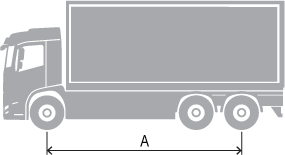
A maximum total combination mass limit of 25.5t applies
- A minimum axle spacing of 4.3m is required for a combination operating at 25.5t
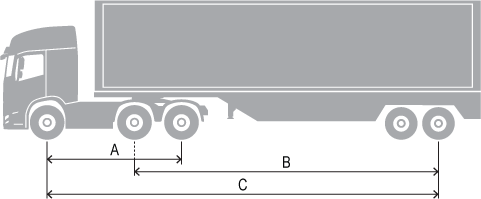
A maximum total combination mass limit of 42.0t applies
- A minimum axle spacing of 4.3m is required for a prime mover operating at 25.5t
- A minimum axle spacing of 7.5m is required between the drive axle and semitrailer axle operating at 35.0t
- A minimum axle spacing of 9.8m is required for a combination operating at 42.0t
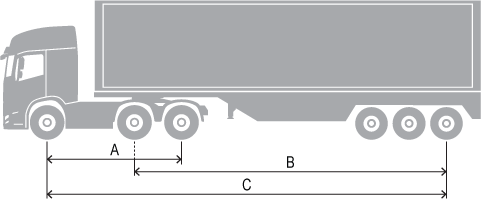
A maximum total combination mass limit 45.5t
- A minimum axle spacing of 4.3m is required for a prime mover operating at 25.5t
- A minimum axle spacing of 8.7m is required between the drive axle and semitrailer axle operating at 38.5t
- A minimum axle spacing of 13.0m is required for a combination operating at 45.5t
Conditional and increased mass limits for a ZEHV prime mover towing a semitrailer
The following mass conditions apply to a semitrailer with an axle group mentioned in Table 5 and Table 6 being used in a ZEHV prime mover towing a semitrailer combination.
A prime mover and a rigid truck are not eligible for conditional and increased mass limits and must comply with the mass limits in Table 3 and Table 4.
The operator must be accredited under the NHVAS Accreditation module - Mass Management to utilise the following mass limits.
These mass limits apply as an exception to the scheme's general mass limits when accredited under the NHVAS Accreditation module - Mass Management and complying with the conditions in Table 5 and Table 6.
Conditional Mass Limits
A ZEHV prime mover towing a semitrailer combination operating under conditional mass limit may apply for the Queensland Zero Emissions HV Permit-Based scheme network, or access may be considered on a case-by-case basis when applying for a single route.
|
Trailer axle group |
Mass limit (t) |
Maximum combination mass (t) |
|---|---|---|
|
Tandem axle group fitted with single tyres on all axles with the section width of the tyres is less than 375mm. |
11.5 |
37.0 |
|
Tandem axle group fitted with single tyres on all axles with the section width of the tyres 375mm or more but not more than 450mm. |
13.8 |
39.3 |
|
Tandem axle group fitted with single tyres on all axles with the section width of the tyres more than 450mm. |
14.5 |
40.0 |
|
Tandem axle group fitted with single tyres on 1 axle and dual tyres on the other axle or axles. |
13.5 |
39.0 |
|
Tandem axle group fitted with dual tyres on all axles. |
17.0 |
42.5 |
|
Tri-axle group on a vehicle fitted with single tyres with section widths of less than 375mm on all axles. |
15.5 |
41.0 |
|
Tri-axle group on a vehicle fitted with single tyres with section widths of less than 375mm on some axles and dual tyres on the other axles. |
||
| Tri-axle group on a vehicle other than a pig trailer fitted with single tyres with section widths of at least 375mm on all axles. | 21.0 | 46.5 |
| Tri-axle group on a vehicle (other than a pig trailer) fitted with single tyres with section widths of at least 375mm on some axles and dual tyres on the other axles. | ||
| Tri-axle group on a vehicle other than a pig trailer fitted with dual tyres on all axles | ||
|
Note: Under conditional mass limits there are no additional mass limits provided to the steer or drive axles of the prime mover. The mass limit of the combination in Table 3 may be increased to include the trailer mass limits described in this table. |
||
Increased mass limits
A prime mover towing a semitrailer combination operating under increased mass limit may apply for the roads that are both approved under the QLD HML Network and the Queensland Zero Emissions HV Permit-Based scheme network or access may be considered on a case-by-case basis when applying for a single route.
|
Trailer axle group |
Mass limit (t) |
Maximum combination mass (t) |
|---|---|---|
|
6-tyred tandem axle group |
14.0 |
39.5 |
|
Dual tyred tandem axle group |
17.0 |
42.5 |
|
Tri-axle group |
22.5 |
48.0 |
|
Note: Under increased mass limits there are no additional mass limits provided to the steer or drive axles of the prime mover. The mass limit of the combination in Table 3 may be increased to include the trailer mass limits described in this table. |
||
Axle spacing when operating under conditional and increased mass limits
Conditional and increased mass limits under the Queensland ZEHV Permit-Based Scheme are applied as an exception to the scheme's general mass limits.
This means the axle spacing does not need to be increased for conditional and increased mass limits. The combination operating at conditional mass limits must comply with Queensland ZEHV Permit-Based Scheme general mass axle spacings condition.
Networks
General Mass limits and Conditional Mass Limits Networks
To operate on the ZEHV Network, an operator must apply for an NHVR permit to access the roads shown in the Queensland Zero Emission HV scheme network.
If access is required on roads that are not included in the network, you will need to apply for a permit following the NHVR permit application process available in the 'How to apply' section of this page.
You will need to submit a 'Single route' or an 'Area' application for each local council area and plot the roads required for your travel off the ZEHV network. Off-network permit applications will be assessed on a case-by-case basis.
More information can be found on Routing - Single route and area difference.
Increased Mass Limit Network
To operate at increased mass, an operator will need to apply for an NHVR permit to seek access on roads that are approved in both the:
- Queensland High Mass Limits Network, and
- Queensland Zero Emission HV Permit-Scheme network.
If access is required on roads that are not included in the above networks, you will need to apply for a permit following the NHVR permit application process available in the 'How to apply' section of this page.
How to apply
To begin your permit application go to  . If you are not already registered, follow the prompts to set up an account.
. If you are not already registered, follow the prompts to set up an account.
Once registered, from the home screen, click on the ‘Application tracker’ tab and select the ‘NEW APPLICATION’ button and enter a reference for your application. So we can correctly identify your application, your reference/application nickname should be 'QLD ZEHV'.
Note: Where you have an existing permit for an eligible configuration, select the ‘AMEND' application button, which will require the permit number to be entered. Follow the prompts to add the additional routes required.
Step 1 - Click the green ‘SELECT CONFIGURATION’ button and select the 'QLD Permit Schemes' menu drop-down. Select one of the relevant configurations from the list:
- QLD - ZEHV Prime Mover Three Axle; or
- QLD - ZEHV Rigid Truck; or
- QLD - ZEHV Prime Semitrailer.
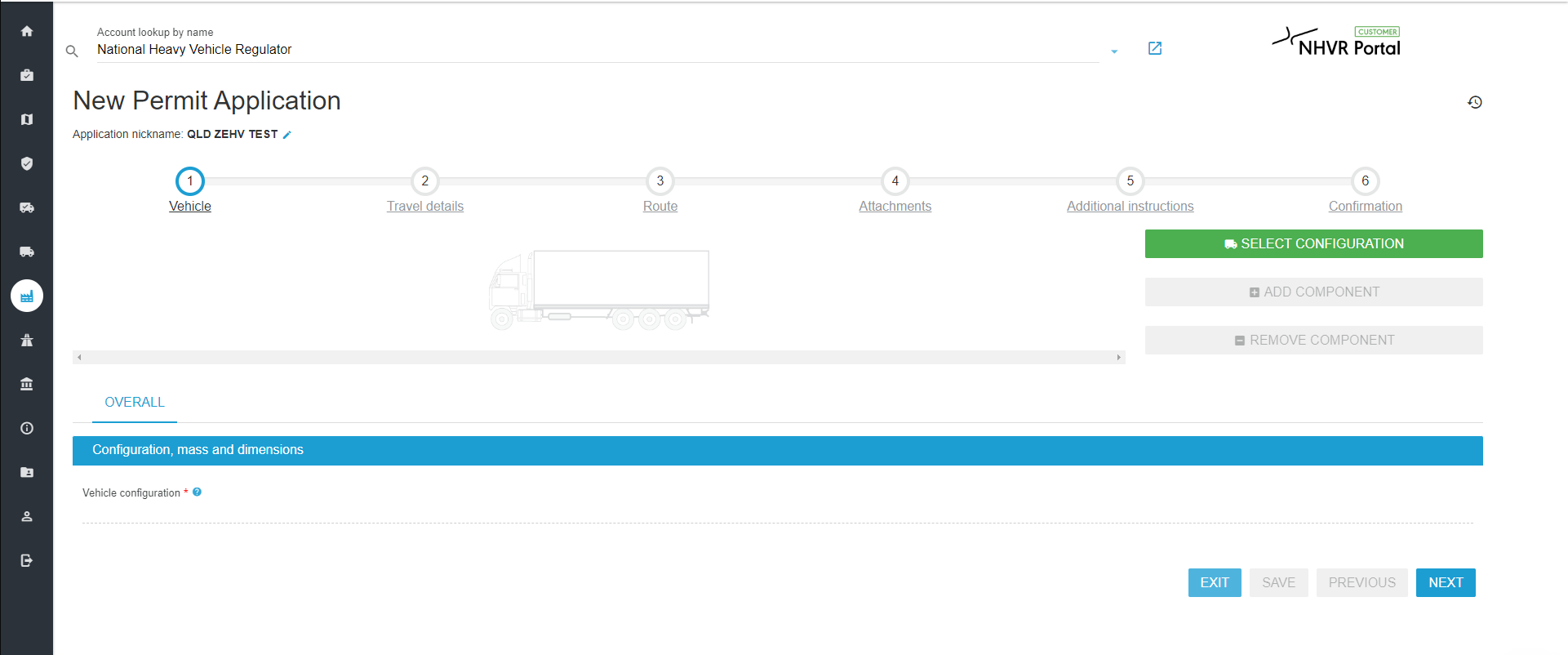
Step 2 - Once the correct configuration is selected, click on the ‘OVERALL' tab and go to ‘Configuration, mass and dimensions.' The vehicle type will require the following vehicle details:
- unladen and laden dimensions
- unladen and laden mass limits
- for each axle, the number of tyres per axle and their sizes
- axle spacings
- axle group mass limits
- VIN and registration details
- ground contact width (GCW)
- load sharing capabilities
- height (4.3m or 4.3m-4.6m)
- length by selecting the appropriate option or adding the vehicle length under the 'Other' button.
In the component images, you must tick the box
These details are required for the road manager to assess your application.
Step 3 - In the ‘Travel details’ section, enter the requested period (the period cannot exceed three years). Input the freight being carried under the 'Description of load', for example, grain, gravel or sand.
Step 4 - Navigate to the ‘Route’ section of the application. Select the ‘Route type' as 'Single Route' or 'Area'.
- If you do not have an existing permit for the Queensland Zero Emission Heavy Vehicle Network, select ‘Network’ and select QLD under ‘In which jurisdiction are you seeking to operate?’.
- If you have an existing permit for the Queensland Zero Emission Heavy Vehicle Network, select ‘Area’ application is selected and the ‘Area Road Manager’ must be selected. Refer to the Routing - Single route and area difference.
- Please note: for requesting roads off the Queensland Zero Emission Heavy Vehicle Network, an ‘Area’ must be selected. Applications for “all roads” will not be accepted.
- Plot the route(s) required that link to the approved network.
- Select the ‘CONFIRM’ tab and add any additional information in the ‘Route notes’ section in support of your application. You must tick the box ☐ 'I confirm that the list of roads and associated route notes accurately defines my route requirements for this application' prior to proceeding to the next step of the application.
Step 5 - In the 'Attachments' section of the application, attach any required supporting documents or additional information.
Step 6 - The 'Additional instructions' section allows the nomination of an approved NHVR Go member of your account (if you will not be the relevant contact for the application). Include any additional instructions required for the application.
Step 7 - In the 'Confirmation' stage ensure all details of the application have been reviewed and confirmed. The application can then be submitted with the appropriate payment.
For more information on applying for a permit, refer to the NHVR access permit applications webpage, or contact us.
Related schemes
A related scheme may coincide with another jurisdiction scheme or provide alternatives for operators to find the appropriate access to operate.
| Jurisdiction | Scheme |
|---|---|
| New South Wales | New South Wales Class 3 Zero Emission Vehicle Mass and Dimension Exemption Notice 2024 (No.1) |
| South Australia | Low and zero emission heavy vehicle trial scheme |
| Victoria | Low or Zero Emission Heavy Vehicles (LZEHVs) |
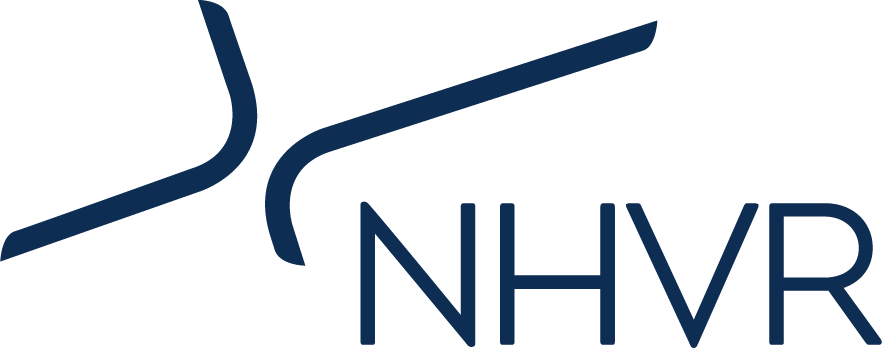
 Accessibility tools
Accessibility tools

